Dan Ferrell은 DIY 자동차 유지 보수 및 수리에 대해 씁니다. 그는 자동화 및 제어 기술 자격증을 보유하고 있습니다.

1. 배터리 방전
2. 시동 모터 또는 시스템 불량
3. 발전기 결함
4. 연료 필터 막힘
5. 연료 압력 조절기 결함
6. 연료 펌프 불량
7. 점화 코일 또는 모듈 결함
8. 크랭크축 위치 센서 또는 캠축 위치 센서 결함
9. 주요 진공 누출
10. 타이밍 벨트 고장
이 문서의 뒷부분에서 몇 가지 테스트를 탐색하고 다시 시작할 수 있도록 어떤 문제가 귀하의 문제인지 결정하는 데 도움이 될 것입니다.
귀하의 문제는 다음 다섯 가지 범주 중 하나에 해당하는 경우가 많습니다.

시동을 거부하는 엔진을 다룰 때 소리 또는 소리의 부족을 진단 도구로 사용할 수 있습니다. 사운드는 문제가 있을 수 있는 시스템에 집중하여 다른 잠재적인 문제 지점을 제거하는 데 도움이 됩니다.
1. 한 번의 클릭
자동차를 시동하려고 할 때 단 한 번의 단단한 딸깍 소리가 들리면 시동 모터나 회로에 문제가 있을 수 있습니다.
2. 덜거덕거리는 소리
엔진을 시동하려고 할 때 후드 아래에서 덜걱거리는 소리가 나면 배터리 부족, 헐거워지거나 부식된 배터리 단자, 교류 발전기 또는 충전 시스템 문제를 가리킬 수 있습니다.
3. 소리가 전혀 나지 않음
시동을 걸 때 아무 소리도 들리지 않으면 다음을 확인하십시오.
4. 엔진이 돌아가는 소리
시동 키를 돌려 엔진에 시동을 걸면 일반적인 엔진 굉음이 들릴 수 있지만 실제로는 엔진이 시동되지 않습니다. 그렇다면:
필요한 경우 리소스를 참조하세요. 이러한 문제 및 기타 문제에 대한 도움말은 이 게시물 하단의 섹션을 참조하십시오.

종종 시동 불가 상태는 연료 시스템의 결함으로 다시 추적될 수 있습니다. 엔진이 뒤집혔지만 시동을 거부하는 경우 이 간단한 테스트를 수행하십시오. 이 테스트를 통해 문제가 연료 공급과 관련이 있는지 여부를 알 수 있습니다.
엔진이 몇 초 동안 시동되었다가 꺼지면 연료와 관련된 문제일 가능성이 큽니다. 다음 섹션에 표시된 대로 연료 필터, 연료 압력 조절기 및 연료 펌프를 확인하십시오.
다음 비디오는 시작 유체를 사용하는 방법을 보여줍니다.
조사해야 할 시스템에 대한 아이디어를 얻었으므로 조사를 시작할 수 있습니다. 다음 10개 섹션에서는 차가 시동을 거부할 때 처리할 가능성이 가장 큰 10가지 결함과 각 잠재적 결함을 확인하는 방법을 다룹니다.
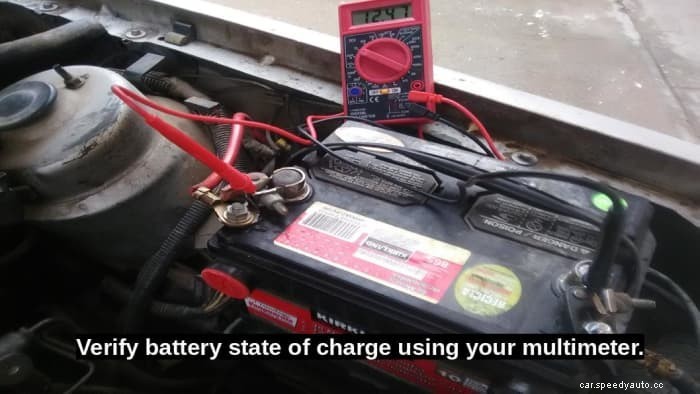
이것은 자동차가 시동되지 않는 가장 일반적인 이유 중 하나입니다. 자동차 배터리는 유지 관리 및 작동 조건에 따라 최대 6년까지 사용할 수 있습니다. 예를 들어, 극단적인 기상 조건은 서비스 수명을 단축시킵니다.
그러나 배터리가 갑자기 방전되는 경우는 드물지 않습니다.
배터리 단자 연결을 확인하십시오. 부식을 제거하고 단자가 단단히 조여졌는지 확인하십시오. 그런 다음 배터리에 탈착식 캡이 있는 경우 전해질 수준을 확인하십시오.
차가 시동을 걸지 않으면 배터리가 충분히 충전되어 있는지 확인하십시오. 디지털 멀티미터(DMM)를 사용하여 충전 상태를 확인할 수 있습니다.
배터리 충전 상태를 확인하려면:
배터리를 재충전해야 하는 경우 가능하면 완속 충전을 사용하십시오. 배터리 상태를 복원하는 데 도움이 됩니다.
지역 자동차 부품 매장에서 배터리가 아직 양호한지 확인할 수 있습니다.

The starter motor and its circuit are other common sources of trouble. This system could be the culprit if you hear a solid click when attempting to start the engine.
There could be a problem with the starter solenoid, relay or starter motor. If necessary, check the circuit with a voltage drop test. See the Resources section at the bottom of this post for help with this test.
Also, your local auto parts store will check the starter motor for free, but you'll need to remove the starter from the vehicle.

Along with a dead or bad battery, alternator issues are one of the most common reasons for a no-start condition.
Usually, the charging system will turn on a warning light on the dashboard alerting you about a fault in the system. However, there are many reasons a charging system may fail to deliver a charge to the battery or electrical power to other systems in the vehicle.
Points to check:
Keep in mind that a corroded battery terminal could be a sign of an alternator overcharging the battery.
If you don't want to do it, your local auto parts store will check the alternator for you.
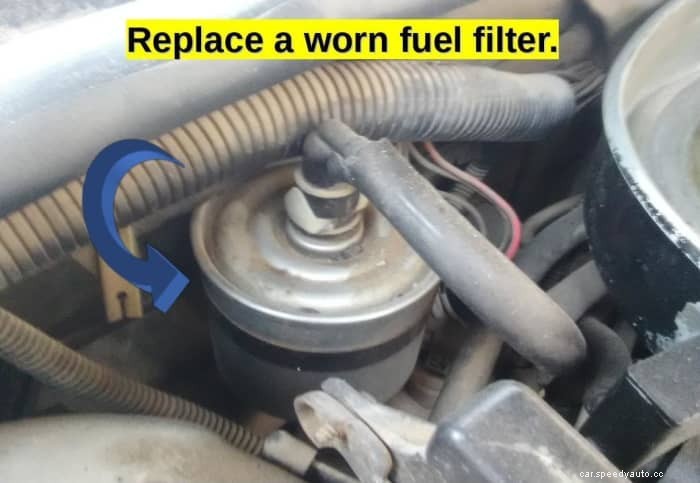
Most manufacturers recommend replacing the fuel filter every one or two years. Replace your fuel filter as recommended.
Although many fuel filters include a bypass valve in case the filter clogs, not all come equipped with this valve. Besides, rust and other sediments in the fuel tank can make their way to the fuel filter and clog its filter element.
Before giving out completely, a clogging fuel filter will give you one or more signs. For example, you may notice a lack of engine power at high speeds, difficulty starting the engine, or poor acceleration.
Check your repair manual to inspect the fuel filter and system in your particular model, if necessary.
If you suspect insufficient fuel reaching the injectors, do the quick fuel system delivery check as described in the second section of this post.

A fuel pressure regulator (FPR) limits the amount of pressure buildup in the system, typically to between 35 and 45 psi. Check your vehicle repair manual for your model specifications.
But FPRs can fail. If the internal diaphragm begins to leak fuel into the intake manifold, pressure will drop, and the cylinders will be flooded with fuel, making the engine hard to start.
Also, if too much raw fuel reaches the catalytic converter, the Check Engine Light (CEL) will begin to flash on your dashboard.
If you suspect insufficient fuel reaching the injectors, do the quick fuel system delivery check as described in the "Pre-Diagnostic 2" section of this article above.
You can perform a few FPR tests at home. See the Resources section at the bottom of this article for some help.
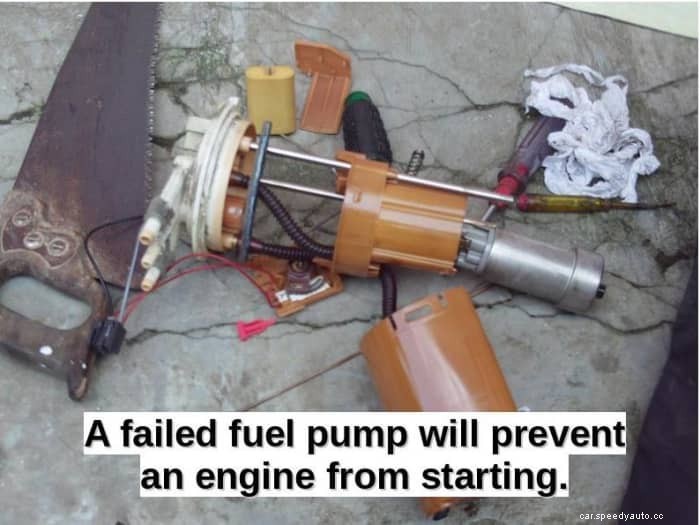
Fuel pumps have a long service life. They can last 80,000 miles or more. If your fuel filter and fuel pressure regulator are fine, but you have a fuel issue, probably your fuel pump is bad.
When turning the ignition key to the "On" position, before trying to start the engine, you should hear a buzzing sound for a couple of seconds. This is the sound of the fuel pump motor being activated to prime the fuel delivery system.
If you don't hear this sound, it may be that:
To verify a fuel delivery issue, do the quick fuel system delivery check as described in the second diagnostic section near the top of this article.
Also, check the repair manual for your particular model to see how to test the fuel pump, if necessary.
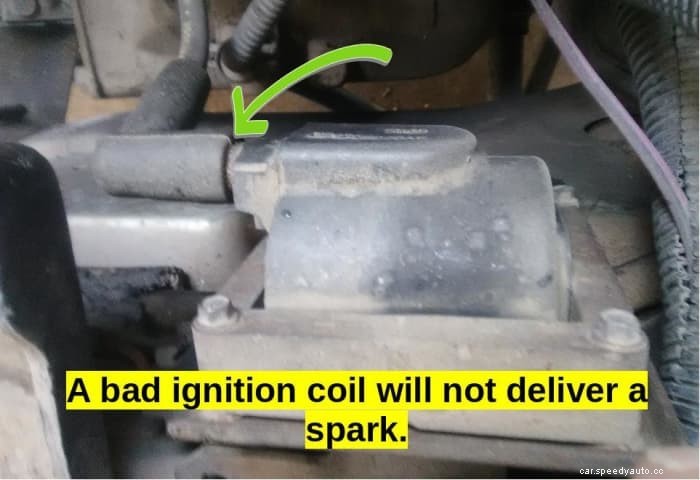
For the most part, ignition coils or modules are pretty reliable. Unlike spark plugs, wires, and distributor caps (depending on the model), an ignition coil or module doesn't require much attention.
However, they can fail from time to time. The conditions under which they operate, like heat, vibration and other engine performance issues, can have an adverse effect on any of these components after many miles of operation.
Older vehicle models used a single ignition coil and module to deliver a spark to the spark plugs. Newer models may use a module and one coil per spark plug. A failed coil or module in one of these models will certainly prevent the engine from starting.
You can use a spark tester to verify the presence and condition of the spark. You can buy one at your local auto parts store. If possible, get an adjustable spark tester you can use in different vehicles.
The Resources section at the bottom of this post, and your vehicle repair manual, can help you check an ignition coil or test for the presence of a spark in the ignition system.

The crankshaft position (CKP) sensor monitors engine speed, and the camshaft position (CMP) sensor tracks the position of the camshaft.
The electronic control module (ECM), the car's computer, uses the signal from both sensors to control fuel injection operation, direct ignition, and, depending on vehicle model, the variable valve timing system.
If any of these sensors fails, your car may fail to start.
Sometimes, depending on the specific fault, a bad CKP or CMP will trigger the check engine light (CEL). Whether the CEL illuminates on your dashboard or not, it's a good idea to scan the computer memory for potential diagnostic trouble codes (DTCs) that can help you diagnose a no-start condition.
If you don't have a scan tool, your local auto parts store may download DTCs for you without cost.
Also, check your vehicle repair manual. And, within the Resources section at the bottom of this post, you'll find links to other posts to help you check these sensors yourself, if possible.
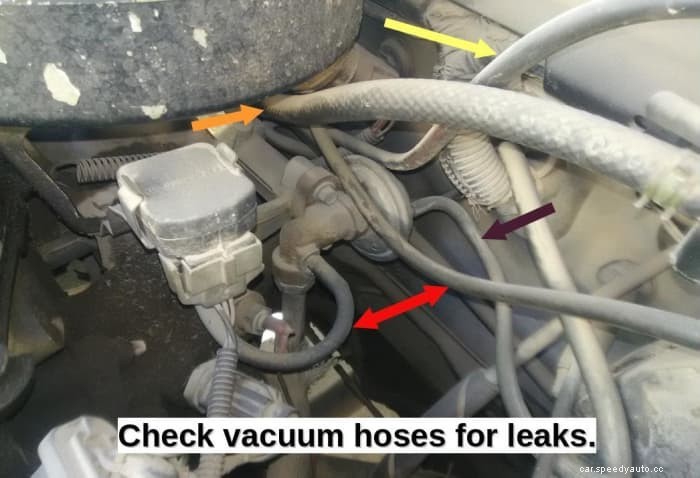
Major vacuum leaks are not common, but they definitely happen. A vacuum leak can make the air-fuel mixture too lean, preventing the engine from starting.
A leak may come from a vacuum line, intake manifold gasket, throttle body gasket, leaking EGR valve gasket, power brake booster or positive crankcase ventilation (PCV) valve.
Vacuum leaks can be tricky to find. You can visually inspect every vacuum hose and trace it with your hand, feeling for tears or damaged spots. Also, pay attention to hissing sounds that may indicate a leak.
A leaking gasket is harder to detect, though, unless you have a smoke machine designed for this purpose.
If necessary, consult your vehicle repair manual.
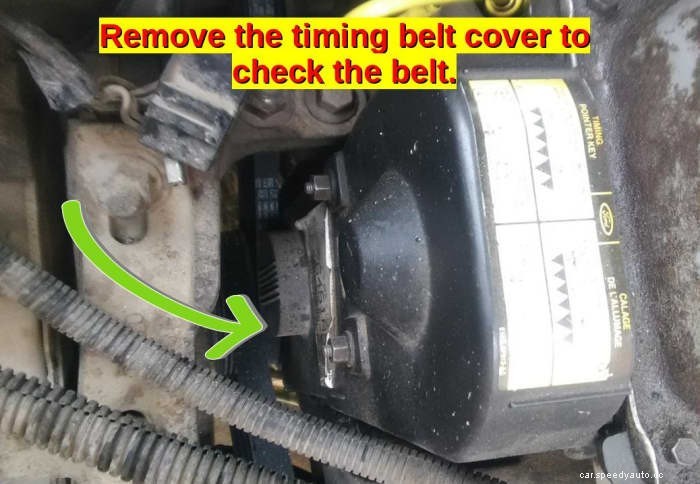
You won't see this type of failure often. Timing belts can last between 50,000 and 100,000 miles or more, depending on your particular model. And if you have a timing chain rather than a belt, you may never have to worry about replacing it.
Still, if you've checked the usual suspect without success, check for a failed timing belt or chain.
The engine's crankshaft and camshaft are joined by a timing belt or chain through a series of sprockets. When this belt or chain brakes or wears out, or the tensioner fails, the crankshaft won't be able to rotate the camshaft anymore, making it impossible to start the engine.
Checking for a failed timing belt or chain:
On a vehicle fitted with a distributor, you can remove the distributor cap and try to fire up the engine. If the distributor rotor doesn't move, most likely your timing belt or chain, or one of the system components, has failed.
On models with multiport fuel injection systems, sometimes it's possible to remove the timing belt or chain cover to check for camshaft movement while trying to start the engine. Or you may be able to remove the oil cap from the valve cover, or the cover itself if necessary, to check for valve movement while trying to start the engine. If there's no movement, it's time to check the belt, chain, or system components.
If the camshaft rotates, you may still want to verify ignition timing. If the belt or chain has skipped some sprocket teeth, it may be difficult or impossible to start your engine.
Consult your vehicle repair manual to check crankshaft and camshaft synchronization.
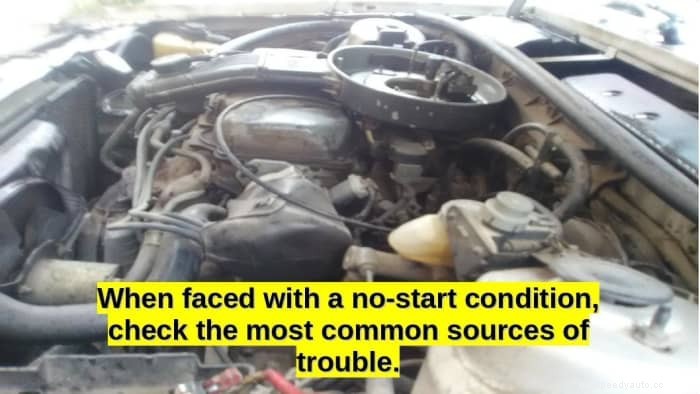
Of course, there are other model-specific components or systems that can prevent your vehicle from starting. 예:
Consult the repair manual for your specific make and model for help on these and other systems or components.
To sum up, when your car won't start, begin your diagnostic with the most simple components or obvious potential problems, as in Diagnostics 1 and 2 at the beginning of the article:
Then you can start checking the alternator, starter motor, ignition, fuel system pressure, and their circuits.
Most of the time you'll be able to fix the problem yourself. Sometimes, you will need to replace a fuel pressure regulator, ignition coil, module, or fuel pump, or fix a vacuum leak.
See the Resources below for diagnostic ideas if you have narrowed your problem down to a particular system.
This content is accurate and true to the best of the author’s knowledge and is not meant to substitute for formal and individualized advice from a qualified professional.